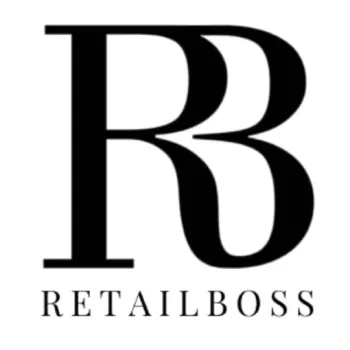What is Retail Real Estate?
Retail real estate is a vital segment of the commercial property market that focuses on properties used for selling consumer goods and services.

Jeanel Alvarado is a marketer and retail strategist, leveraging 15+…
Retail real estate is a vital segment of the commercial property market that focuses on properties used for selling consumer goods and services. This sector has recently experienced significant growth and innovation, particularly after the global pandemic. As businesses adapt to changing consumer behaviors and preferences, retail real estate continues to evolve, offering new opportunities and challenges for investors and retailers alike.
Types of Retail Properties
Retail properties come in various forms, ranging from single-tenant buildings to large shopping centers with multiple anchor tenants. Some common types of retail properties include:
1. Single-tenant retail buildings: These are standalone structures occupied by a single retailer, such as a fast-food restaurant or a bank branch.. They are typically located in high-traffic areas and may feature a drive-thru or ample parking.
2. Strip malls: These are small shopping centers that typically feature several retail tenants, anchored by one or two larger retailers. They often have an open-air layout and share a parking lot.
3. Neighborhood centers: These are larger shopping centers that serve a specific area or neighborhood. They may feature a mix of retail and service tenants, such as grocery stores, banks, pharmacies, gyms and other essential services.
4. Regional malls: These are large enclosed shopping centers that typically feature upscale department stores, specialty retailers, and restaurants. They often serve as the primary retail destination for a region or city.
5. Larger centers with grocery store anchor tenants: These shopping centers are anchored by a major supermarket and may also feature smaller retailers, restaurants, and service providers.
6. Power centers: These large retail complexes are characterized by multiple big-box stores, such as home improvement centers, electronics stores, and discount department stores.
7. Lifestyle centers: Are open-air shopping centers with high-end retailers, restaurants, and entertainment options. They often have an upscale, pedestrian-friendly atmosphere.
Key Factors for Successful Retail Real Estate Investments
Investing in retail real estate can be lucrative, but several factors must be considered carefully to ensure success. Some key aspects to consider when evaluating retail properties include:
Location
Firstly, location and accessibility are critical. The property should be situated in an area with high foot traffic and good visibility. Proximity to public transportation and accessible parking can significantly enhance customer convenience. Moreover, being located among similar businesses can create a clustered environment that attracts more customers.
Visibility
Foot traffic is another crucial element. Properties with steady volumes of pedestrian traffic increase the potential customer base. Coupled with this is visibility, ensuring your store is easily noticeable to passers-by.
Size
Store size and space must align with your business requirements, offering sufficient space for displays, inventory, and customer movement. Evaluate if the property's layout allows for efficient customer flow and effective product placement. Future expansion needs should also be considered to avoid relocation expenses.
Condition
The condition of the property is also vital. Conduct thorough inspections to assess structural integrity, electrical, plumbing, and HVAC systems to avoid unforeseen maintenance costs. Professional assessments can provide accurate evaluations of these critical components.
Zoning
Zoning regulations must be reviewed to ensure the property is suitable for retail use and meets all legal requirements. Understanding the local ordinances will prevent future legal challenges and operational disruptions.
Lease Terms
Consider the financial aspects, such as rent and lease terms. These should be manageable within your budget while leaving room for operational expenses. Reviewing the lease terms for provisions like rent escalations and renewal options is advisable.
Surroundings
Finally, the surrounding market should be analyzed, including customer demographics and existing competition. Understanding the local market dynamics will help tailor your offerings to meet the demand and stand out from competitors.
Types of Retail Leases
In retail real estate, understanding the types of leases is crucial for both lessors and lessees. Each type has its financial responsibilities and benefits, tailored to various business needs. Below is a detailed list of the common types of retail leases, including their definitions and examples:
1. Gross Lease
- In a gross lease, the tenant pays a single, flat amount, which includes rent, taxes, utilities, and insurance. The landlord is responsible for covering all building-related expenses out of this rent.
-
- Example: A small boutique shop in a suburban mall pays a fixed monthly rent that covers all utility, maintenance, and property-related costs, allowing the business owner to focus solely on running the shop.
2. Net Lease (Single, Double, and Triple Net Lease)
- A net lease requires the tenant to pay a base rent plus additional expenses typically related to the operation of the property. These additional costs can include property taxes, insurance, and maintenance. Net leases exist in three subtypes:
-
-
- Single Net Lease (N): The tenant pays base rent plus a proportionate share of property taxes.
- Double Net Lease (NN): The tenant pays base rent, property taxes, and insurance premiums.
- Triple Net Lease (NNN): The tenant covers nearly all property-related expenses, including property taxes, insurance, and maintenance costs.
- Example: A chain restaurant in a shopping center operates under a triple net lease, paying base rent along with property taxes, insurance, and maintenance fees, thereby assuming most of the financial burden associated with property ownership.
-
3. Percentage Lease
- This lease type requires tenants to pay a base rent plus a percentage of their gross sales. Typically used in retail settings, this lease benefits both the landlord and the tenant; landlords earn more as the tenant's sales increase, while tenants benefit from lower base rents.
-
- Example: A clothing store in a busy mall pays a fixed monthly rent and also a percentage of its monthly revenue once sales exceed a specified threshold (breakpoint). This arrangement ensures that during slower months, the store only pays the base rent, but as sales increase, so do the payments to the landlord.
4. Variable Lease
- Also known as a graduated lease or an index lease, the rent in a variable lease can change based on predetermined conditions. An index lease adjusts according to a specific price index, while a graduated lease has scheduled increases.
-
- Example: A tourist gift shop in a coastal city pays rent that increases every year by 5%, or a percentage based on the Consumer Price Index, ensuring the rental amount stays contemporary with market conditions and inflation rates.
5. Modified Gross Lease
- A hybrid between a gross and net lease, a modified gross lease allows the landlord and tenant to negotiate which expenses each party will cover.
- Example: An electronics store may agree to pay for its own electrical bills and waste removal costs, while the landlord covers property taxes, insurance, and other utilities.
Challenges in Retail Real Estate Investment
Investors in retail real estate face a myriad of challenges in 2023-2024, driven by economic instability, shifting consumer trends, the impact of e-commerce, and property-specific issues.
Economic Factors
Post-pandemic challenges, labor shortages, inflation, and an energy crisis have strained the commercial real estate market. These factors and geopolitical instability create a turbulent economic environment affecting investment decisions. High financing costs and stricter lending requirements further complicate capital acquisition for new projects.
Shifting Consumer Trends
The retail landscape has transformed significantly. Consumers increasingly prioritize wellness and holistic health, prompting investors to focus on wellness-oriented retail spaces. Additionally, changing buying habits and a heightened preoccupation with inflation influence where and how consumers spend their money, leading to unpredictable retail sales.
E-Commerce Impact
The growth of e-commerce presents both challenges and opportunities. While digital platforms like Amazon account for a substantial portion of retail sales, traditional retailers must innovate to remain competitive. E-commerce’s expansion increases demand for strategically located distribution centers, leading to higher property values and competitive bidding for industrial spaces.
Property-Specific Issues
Vacancy rates have increased, and some segments have decelerated rent growth. Despite high demand, the availability of prime retail spaces is limited. The shift towards neighborhood centers and freestanding properties reflects this scarcity. Retailers are also shrinking their physical footprints to reduce overhead costs, opting for smaller, better-quality spaces. For instance, Foot Locker plans to close around 400 mall stores in North America by 2026.
The Future of Retail Real Estate
The retail landscape has undergone significant changes in recent years, driven by the rise of e-commerce and shifting consumer preferences. Traditional in-store shopping has given way to a more integrated approach that combines online and offline channels, offering consumers greater convenience and choice.
As a result, retail real estate has had to adapt to these changes, with an increased focus on creating unique and engaging shopping experiences that attract customers and encourage them to spend time at the property. This has led to the emergence of "retailtainment" concepts, where shopping centers incorporate entertainment, dining, and leisure facilities to create a more immersive and enjoyable experience for visitors.
As consumer behaviors and preferences continue to change, retail real estate will need to adapt and innovate to remain relevant and profitable in the years to come. However, despite these challenges, retail real estate investment can still offer attractive returns for investors who carefully evaluate properties and stay attuned to market trends.
Jeanel Alvarado is a marketer and retail strategist, leveraging 15+ years of cross-disciplinary expertise in retail, e-commerce, technology, consumer and shopping trends. She is the former Senior Managing Director of the School of Retailing at the University of Alberta. Jeanel’s insights appear in Nasdaq, Entrepreneur, Fortune, TIME, and the US Chamber of Commerce, among others, with recurring commentary on top retailers and brands for financial markets, consumer insights, shopping trends, tech Innovation, and the luxury sector.





